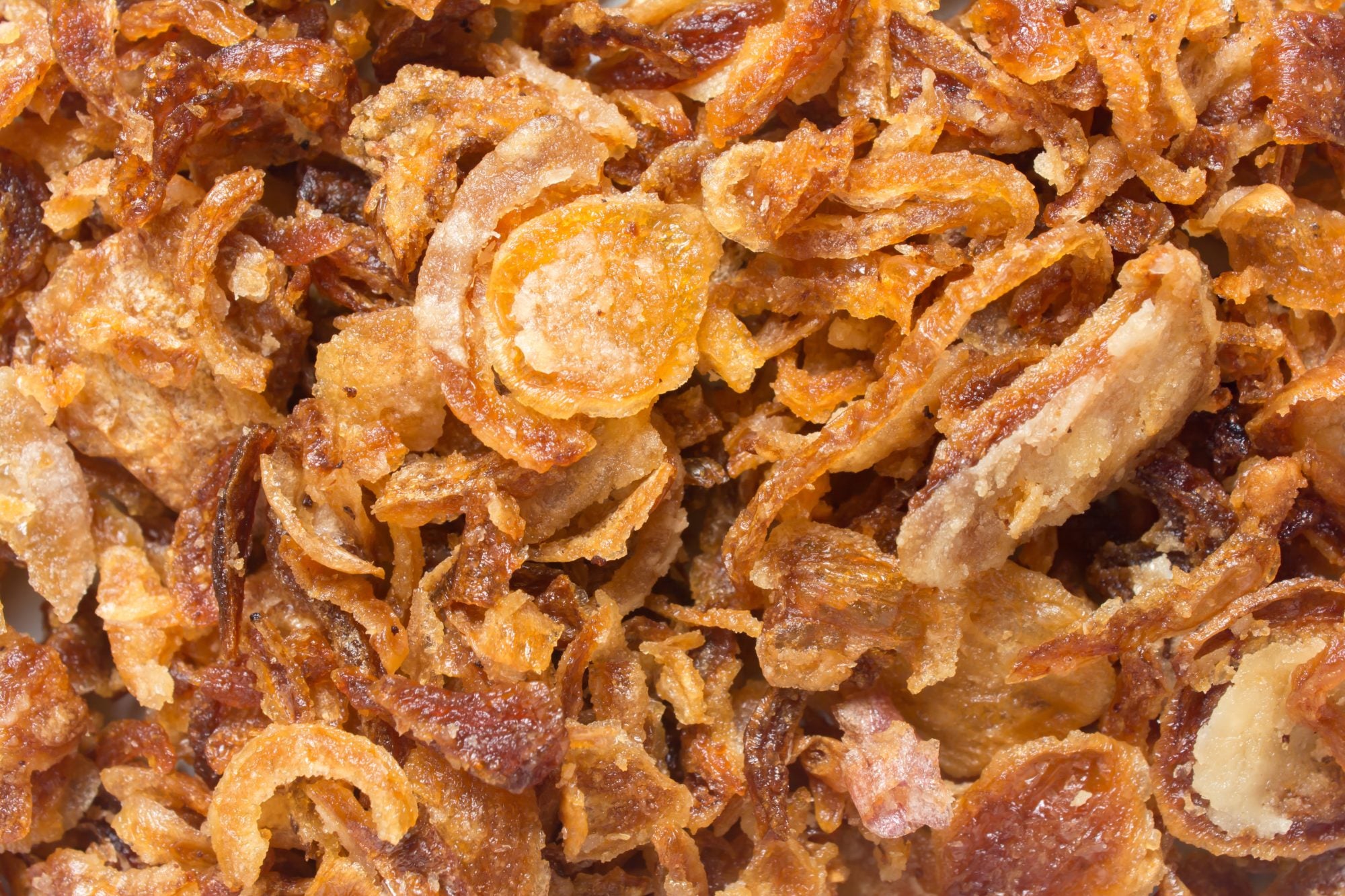
Fried shallots are a reliable pantry staple that can fix just about anything with a little bit of crunch.
Perhaps it’s my childhood love for Funyuns, but I have a near-constant hankering for something salty, crispy, and allium-based to finish off a dish. Now that I’m a little older, I’ve swapped those neon yellow bags for a red-lidded plastic jar of tiny, sweet fried shallots. Anything from a bare-bones avocado toast to puttanesca-sauced pasta can benefit from a healthy sprinkling of fried shallots on top for both flavor and texture.
Much like the French’s Crispy Fried Onion you might have grown up sprinkling on steaks, green bean casseroles, and burgers, fried shallots are versatile across many dishes and cuisines. They naturally make an appearance in Danish roast beef smørrebrød, Vietnamese banh cuon, Icelandic hot dogs, and Middle Eastern mujaddara. A dusting of crunchy fried shallots provides textural contrast to tender meats, silky sheets of rice batter, and soft lentils.
But aside from the obvious crunchiness, those packed little clusters give a warm, caramelized flavor that you usually don’t get from a garnish. Often, alliums like shallots or garlic are added to a dish at the beginning of the cooking process—when you’re seasoning meat, or making a sofrito or mirepoix. The flavor tends to mellow out and dilute as the whole thing cooks. Adding fried shallots at the end of a dish adds a more punched-up savory concentration.
With a handful of peeled shallots, some canola oil smoking over high heat, a very sharp knife, and strength to fight back tears while chopping, it’s possible to make fried shallots at home. But this is something—like ramen noodles or dumpling wrappers—I believe is better when purchased at a store, which skips over the inherent oil splattering and post-fry paper towel draining. Buying a 16-ounce container for around $7 (or a 32-ounce one, if you’re lucky) from an Asian market has its own merits, too: It’s cheap, the texture stays consistent, and the shelf life is about a year—if you keep the jar tightly sealed. Most will only have two ingredients: shallots and oil (varying from palm to soybean to corn), occasionally with wheat flour to maintain the crisp.
As often as recipes say “salt and pepper to taste,” I envision my own addition of a heavy-handed pour of fried shallots onto salads, sandwiches, roasts, and even soups. In the face of a little bit of liquid, they’re a sturdy addition, absorbing the surrounding flavors while retaining just a bit of chew before getting too soggy.
There’s hardly a restriction as to what you can and can’t add fried shallots to. So while you’re at an Asian grocery store grabbing a jar of it, you might as well pick up the ingredients for pidan doufu and see just how much fried shallots can improve the most static of recipes. The building blocks of this Chinese dish are always the same: Start out with a layer of silken tofu straight from the package, and top it with slices of pidan (a preserved egg with a creamy cured yolk). Then pour a mixture of equal parts soy sauce, black vinegar, and sesame oil all over it. Finish it off with a topping of pork floss, chopped scallions, and my own not-so-traditional addition to the recipe: fried shallots. Once you get a spoonful with every ingredient, it’s an intermingling of sweet, salty, funky, rich, smooth, pungent, and—most important of all—crunchy.
